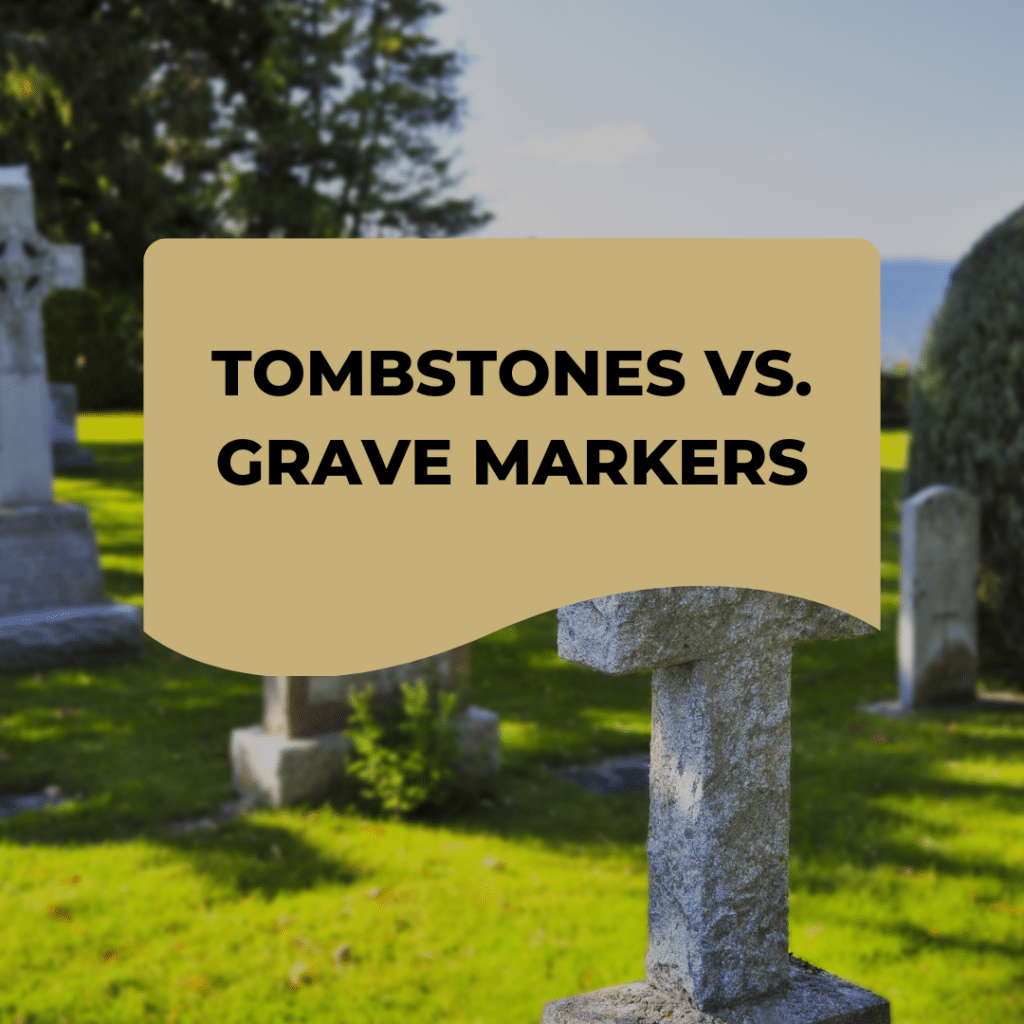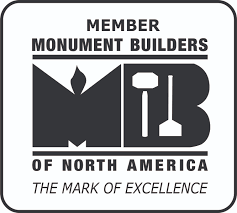When it comes to memorializing loved ones, two terms often come up: tombstones and grave markers. While many people use these terms interchangeably, there are subtle but important differences between the two. Understanding the distinctions can help you make a more informed decision when choosing a memorial for a loved one. In this post, we’ll explore the differences and the various types of headstones and materials and help guide you in selecting the best option for your needs.
What is the Difference Between a Tombstone and a Grave Marker?
At its core, a tombstone is a type of headstone that marks a grave, typically featuring an upright structure. It is traditionally made of stone or granite and often includes engraved details such as the name, date of birth, date of death, and sometimes, a short epitaph. Tombstones have a long history and are often thought of as traditional cemetery memorials.
A grave marker, on the other hand, can refer to any type of marker placed at a burial site, but it is usually flatter and smaller than a tombstone. Grave markers can be made of various materials, including granite, bronze, or concrete, and they can lie flush with the ground. These markers often contain basic information, such as the deceased’s name and dates of birth and death, but they tend to have less decoration than tombstones.
In essence, while tombstones are a type of grave marker, the term “grave marker” is broader and includes several types of memorials, including flat markers and plaques.
Types of Headstones
When deciding between a tombstone and a grave marker, it’s essential to understand the various types of headstones available:
Flat Grave Markers
- As the name suggests, these grave markers are flat and rest level with the ground. They are a popular choice for families looking for a more understated, modern memorial. Flat grave markers are generally less expensive than upright tombstones and are often chosen for their simplicity and durability.
Upright Tombstones:
- In the traditional tombstone style, these memorials stand upright at the head of the grave. Upright tombstones can be quite elaborate, featuring carvings, statues, and other artistic elements. They offer more space for personalization, making them ideal for families who want to create a more detailed, unique tribute.
Grave Marker Styles
When it comes to grave marker styles, there are several options available:
- Traditional Grave Markers: These typically feature classic designs, often made from granite or marble. They can be simple or intricate and are commonly seen in older cemeteries.
- Modern Grave Markers: Today, many families opt for modern grave markers, which can feature clean lines and minimalist designs. They are often made from durable materials like granite or bronze and can be personalized with text, artwork, or even images.
Best Materials for Tombstones and Grave Markers
Choosing the right material for a tombstone or grave marker is essential for durability and aesthetic appeal. Some of the most popular gravestone materials include:
Granite
- Granite is the most common and durable material for both tombstones and grave markers. Granite is resistant to weathering, making it a long-lasting choice for cemetery memorials.
Marble
- Often associated with classic, elegant memorials, marble is a popular material for both tombstones and flat grave markers. However, it may weather faster than granite.
Bronze
- This is frequently used for plaques or flat markers. Bronze grave markers offer a unique, antique look but require some maintenance to prevent tarnishing.
Limestone and Sandstone
- Though less durable than granite, these materials can be used for tombstones and are often chosen for their classic aesthetic.
Tombstone or Grave Marker: Which is Better?
The decision to choose a tombstone or grave marker depends on several factors, including budget, style preference, and the cemetery’s regulations. Tombstones are ideal if you’re looking for a traditional, upright memorial that can feature intricate carvings or sculptures. They tend to be more expensive and may require more maintenance due to their size and exposure to the elements.
On the other hand, grave markers are often more affordable and simpler, making them an excellent option for families on a budget or for those who prefer a more minimalist, modern approach. Flat grave markers, in particular, can be a good option for those seeking a low-maintenance, elegant tribute that remains level with the ground.
Cost of Tombstones vs Grave Markers
Another important consideration is the cost difference between tombstones and grave markers. Tombstones, especially upright models, are generally more expensive due to their size, design, and material used. Depending on the type of stone, engraving, and added features, the cost of a tombstone can range from $1,000 to $3,000 or more.
In comparison, flat grave markers are typically more affordable, with prices starting around $300 to $600 for a basic marker. However, the price can increase based on the material and level of customization.
How to Choose Between Tombstones and Grave Markers
In the end, the choice between a tombstone and a grave marker depends on your personal preferences, budget, and the type of memorial you want to create. Both options offer unique ways to commemorate a loved one, and there’s no wrong choice. Whether you opt for an upright tombstone or a more understated grave marker, selecting the right memorial is a meaningful way to honor a life well lived.
If you’re ready to choose a tombstone or grave marker for your loved one, Buzzi Memorials can help guide you through the process. With a wide selection of headstones, grave marker styles, and personalized options, we’ll help you create a lasting tribute that reflects your family’s unique legacy.
Contact Buzzi Memorials today to explore your options and find the perfect memorial.


